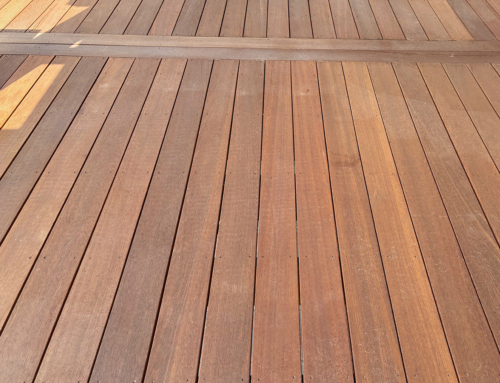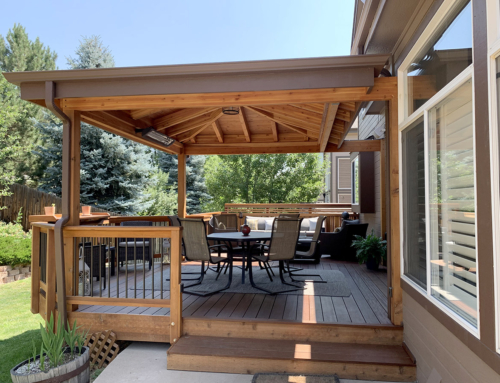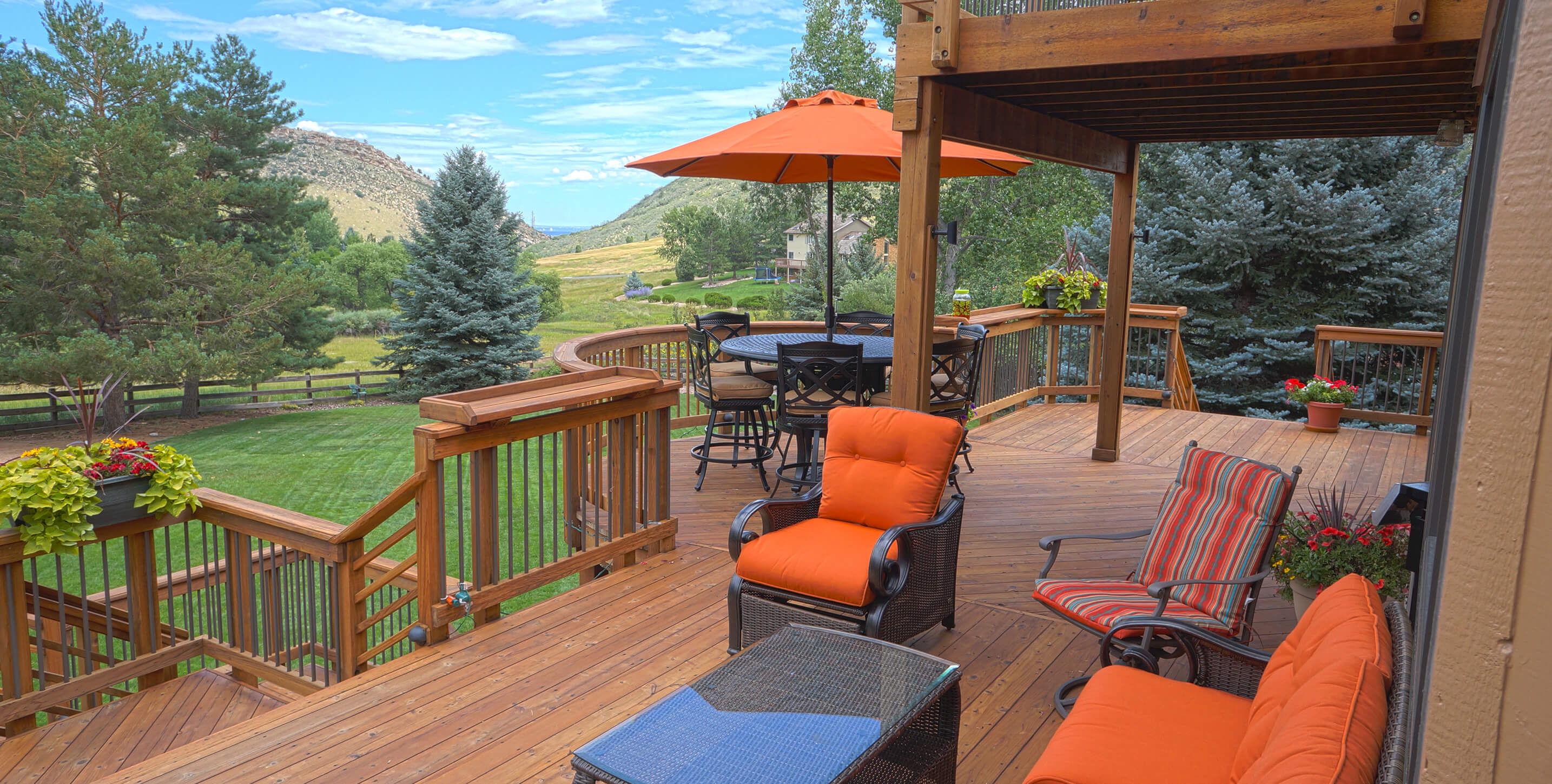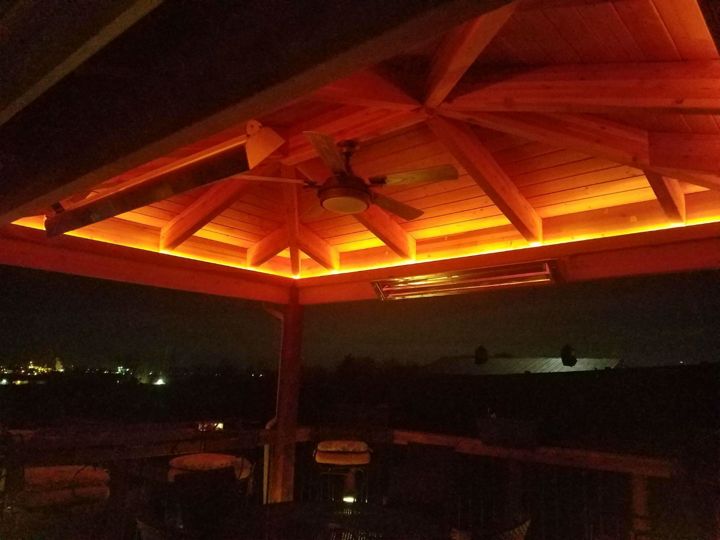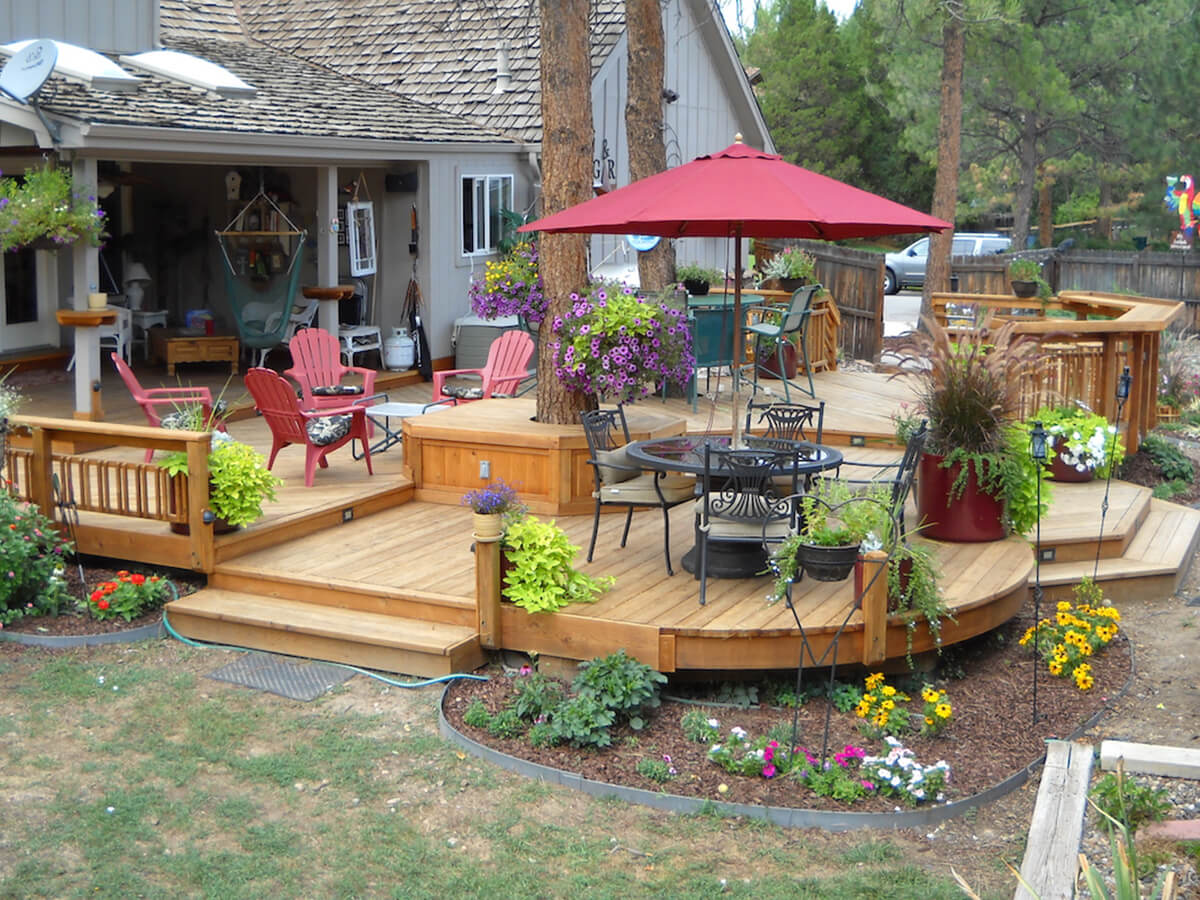
How to Protect Your Deck from Planters
Planning for a summer staycation has led to increased interest in home gardening across the Front Range. For homeowners looking for an easy way to use their green thumbs or spruce up their outdoor living spaces, container gardens and planters are an especially popular choice. But a word of warning: those planters can end up damaging your deck if […]
Planning for a summer staycation has led to increased interest in home gardening across the Front Range.
For homeowners looking for an easy way to use their green thumbs or spruce up their outdoor living spaces, container gardens and planters are an especially popular choice.
But a word of warning: those planters can end up damaging your deck if you aren’t careful. If standing water collects underneath them, it could cause stains, promote mildew and mold growth, and even end up rotting the wood in your deck.
Even if you have a saucer tray under your potted plants to hold drain-off water, you can still run into trouble when that water overflows out of the saucer.
Of course, that doesn’t mean you shouldn’t enjoy the wonders of container gardens or planters on your deck. It just means you need to follow a few simple rules to protect your deck’s beauty, structure, and value.
After all, the question shouldn’t be, “How many planters can you put on your deck?” or “Can you put potted plants on your deck?” It should be, “How can you make sure that your beautiful plants and container gardens don’t end up damaging your deck?”
For that question, we’ve got answers. Here are our top 6 tips for protecting your deck from damage caused by planters.
1. Move Planters Around Regularly
If you are able, make it a point to move them to different spots on your deck to prevent water damage underneath. Don’t rotate your plants around the same places — move the plants to entirely new spots, so the wood beneath gets a break.
Move them every week to give the wood a chance to dry out and prevent rings or stains on the deck.
Not all potted plants are easy to move, in which case you need a good alternative. That brings us to our next tip.
2. Promote Airflow with Planter Feet
Planter feet or pot risers are incredible little inventions. They let you put plants or container gardens wherever you want on your deck or outdoor living space, without having to worry about water damage.
These pot risers create a small gap of airflow between your plants and the surface of your deck. That means no standing water, no stains, and no rotting. Plus, it keeps bugs at bay and less likely to hang out in those damp, dark spots under your planters.
Planter feet are cheap, easy, and most importantly, they work!
3. Hang Planters
The best-case scenario for planters on a wood deck is for them not to come into contact with your deck. That is the beauty of hanging planters and deck railing plant boxes.
They still bring life and color to your deck, while avoiding the mess and work of moving around planters every week.
If possible, plant hangers far enough out so that excess water drips onto the ground, not the deck. The same goes for deck railing plant boxes — hang them on the outside of the railing, so they don’t drip on your deck.
Even if some water does drip on your deck, it’s better than having a planter sit directly on the wood. At least with hanging planters, the wood can dry out.
4. Don’t Overwater
You may have noticed a recurring theme so far in this blog — the problem of water dripping from plants or overflowing from drain-off saucers. That will never be a problem if you don’t overwater your plants in the first place.
Figure out how much water each plant or container needs and stick to those measurements.
5. Put Planters Away in the Winter
Here in Colorado, your summer plants won’t stand a chance in the winter. As the fall turns to winter, your flowers will slowly die.
Many homeowners see their dead plants as a signal to stop worrying about our planters entirely. But you should be thinking the opposite.
Your quality wood deck can easily withstand snow and ice. But if you leave your planters out all winter, snow and ice will melt and turn into standing water beneath them.
By the time spring rolls around, it may be too late, and you’ll be stuck to deal with ugly stains and stinky mold.
6. Seal Your Deck
It’s not always easy to be diligent with your deck planters. You might forget to move one of your potted plants for a month, or you might never get around to buying a hanging a container garden.
That’s why the best way to protect your deck from water damage is also the easiest: sealing your deck. Sealing (and staining) is one of the most critical deck maintenance forms you can do and is well worth the investment.
At DeckTec Outdoor Designs, our Colorado deck builders and outdoor living specialists start the sealing process with a full cleaning. This service removes any dirt and grime that has built up over time. Then we stain and seal your deck with a protective coating that keeps out water and seals in the natural beauty of the wood.
If you’re serious about deck maintenance, please check out our Fresh Deck subscription service. It’s the easiest way to keep regular deck maintenance on the calendar, preserving the beauty and value of your outdoor living space.
Make Your Deck Last a Lifetime
Preventing water damage is just one way to make your wood deck last a lifetime. Another great idea is to add a custom roof addition to protect your deck from the elements.
A roof also turns your outdoor living space into an outdoor living room, making it more usable and valuable. And a roof is just the tip of the iceberg when it comes to ways to keep your deck looking and feeling great for decades.
Share this article
Follow Our Story:
Easily Reach Us:
A quick overview of the topics covered in this article:
Latest articles
FEATURED IN






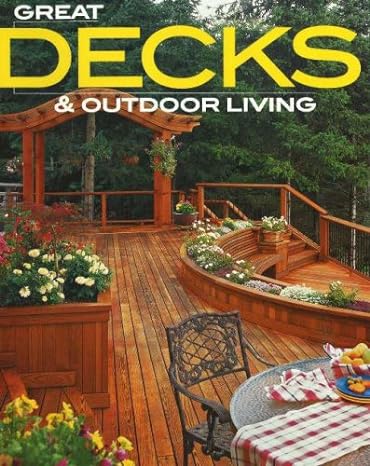

Real People
Real People
Work With You,
at Every Step
Work With You,
at Every Step
From planning to construction –
Our team has your back!
From planning to construction –
Our team has your back!


Get Started Today!
If the market value of your home is important to you – as it is for many – adding a custom deck can increase your house value.
If you’re considering adding a custom deck to your home, reach out to HFS Financial for all of your home improvement financing needs. HFS makes it easy to fund your project with minimal documentation requirements, no equity or appraisal needed, and direct-to-consumer funding.
Adding or improving an existing deck can add a number of beneficial features to your home. Not only can a new deck improve the value of your property, but it can also make your home more enjoyable for you and your family.
HFS Financial also offers 120% financing, allowing you some financial wiggle room for those unexpected hiccups that you may find along the way of your deck-building journey. All funds are paid directly to you, the consumer, so there’s no need to coordinate contractor work with payout schedules. Handle your project your way.
Once we’ve received your information through our 60-Second Loan Application, you will be notified of possible loan options quickly to discuss and review your loan terms and the home improvement project you have in mind.
My husband Matt and I [...] have moved away from the home where we had the beautiful deck and outdoor living space you created. We will forever remember fondly that beautiful deck, and the hard work you did during a very bad economic time to fix problems around the foundation of our home. Steve, Keith, and all of your workers were fabulous and we sent several of our friends your way with referrals. We are sure that your deck helped us get a wonderful offer on our home.
We just wanted to tell you how much we enjoy the decks DeckTec constructed at our home. Their use is a constant joy. We continually receive compliments on the design and quality of your work. We look forward to many years of use.
DeckTec are absolute pros. They just finished a big deck and roof cover project at my house. The total experience from working with Steve in Design and Sales, Keith in Project Management, and Charlie, Josh, and Hank in Construction was nothing but 6 star service. 100% on time and on budget with craftsmanship and quality. Skip the “Hammer and Nails” contractors and go with DeckTec if you want an “Outdoor Living Space”. Call these people – you will not be disappointed.
I just wanted to let you know how pleased I am with the work Decktec completed refinishing my deck. It hasn’t looked this good since it was new sixteen years ago. Decktec was very professional, polite and willing to work with me to get the exact color of stain I wanted. I would recommend Decktec to anyone who wants a complete job from the great construction work starting the job, to its thorough cleanup. I’m happy my neighbor referred me to Decktec. You are the fourth company I’ve had refinish my deck and will now be the only company I use going forward.

